What were the steps leading to ‘White Henna’ on hennapage.com?
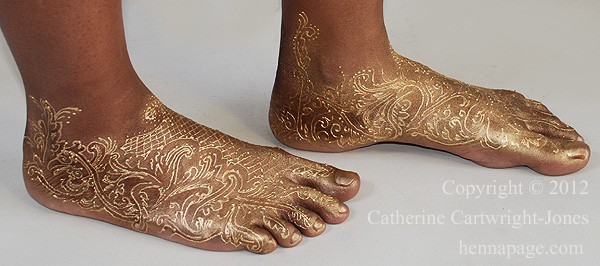
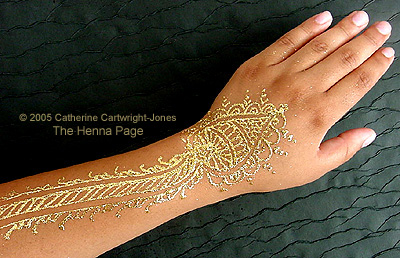 | From
the time that Catherine Cartwright-Jones PhD began managing
Hennapage.com, she has focused on innovating safe new techniques for
henna artists, as well as providing the history, science, and
traditions of henna. Catherine wrote the hennapage.com 'how to' beginning in 2003, and added sections for incorporating glitter and new materials to henna art in 2004 and 2005. The image at the left was from the original Hennapage 2005 tutorial using medical adhesive as 'white henna' with and glitter to create a 'golden henna'. |
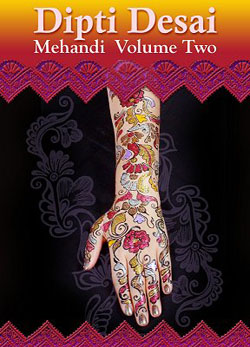 In
2004, Dipti Desai contacted hennapage.com to produce articles and book
on Gujarati henna, featuring the colorful variants on henna that were
popular in India at that time. These were done to emulate the
embroidery on dupatta and saris. To publish her work, Catherine Cartwright-Jones began working on formulating gilding techniques that would be made from skin-safe ingredients available in the west. | Henna
has limitations. Henna's natural color range is narrow.
Henna has to stay in contact with skin, undistrubed, for a long
period of time to produce a good stain. These factors made henna
a poor fit for consumer consumption in a global economy. People love color, sparkle, and convenience. If henna is a benefit to women world-wide working in informal economies, artists will attempt to adapt to the marketplace. The most unfortunate effects of this has been the addition of para-phenylenediamine to henna to create 'black henna', causing over a million injuries since 'black henna' first became fashionable. The addition of benzene to henna to create faster, darker color has caused an epidemic of adult leukemia in the Arabian Peninnsula. HennaPage worked on developing safer alternatives to help henna artists serve their clients who wanted a wide color range, familiar application, non-traditional skin placement, a high level of safety, accessible, safe ... and if possible, approved by the FDA and manufactured with clinical safeguards. Medical adhesive turned out to be one of the best options. |
 Robin Jaeckel experimenting with the early development of Becoming Moonlight® gilding paste techniques. Every year, a work crew of artists were invited to produce the HennaPage calendar, and every year, they were encouraged to 'push the envelope' with innovative techniques. Each work project had a theme, usually involving solving a technical challenge for henna artists. In 2012, the hennapage calendar artists met to work on dark skinned people, with the ideal of getting the best henna results on dark skin. | 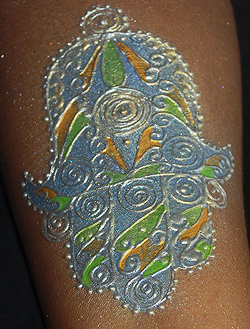 Robin Jaeckel's Becoming Moonlight® hamsa, in progress at left. Olena Wilshanetsky had been experimenting with medical adhesive so it would be easier to work with than the less-than-ideal Pros-Aide products that we had previously been using. She brought her mixtures to the hennapage calendar work week, and the artists fell in love with it! Because this improved medical adhesive was introduced into a collaborative effort, each artist tried different approahces, and bounced ideas off each other, advancing the experimentation and getting results more quickly. |
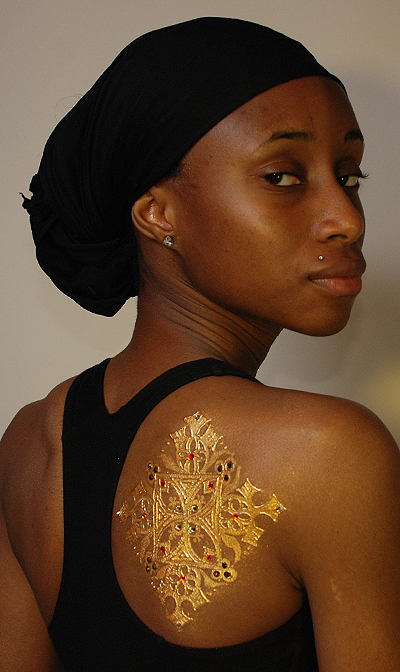 Early experimental work by Deb Brommer with Becoming Moonlight® gilding paste. During
the HennaPage calendar experimentations with 'white henna' in 2012, the
head of the KSU African Studies department and the organizer of a
women’s economic development groups in Nigeria visited with us.
We talked about the potential for ways to introduce this to women's
economic development cooperatives in Africa where 'black henna' made
with para-phenylenediamine has been injuring women for decades.
Becoming Moonlight® gilding paste, 'white henna' could be helpful in
helping women in Africa, or anywhere in the world, have an independent
income without harming their own, or their client's health with
para-phenylenediamine. We hope that sometime in the future, this
will happen. | Becoming
Moonlight® gilding paste was chemically too complex to mix in small
batches. Dianna Savick, HennaPage operations manager, contacted
the originating chemist, showed him the photographs of the artwork
produced for the HennaPage 2013 calendar, and he was delighted that his invention could be used for something so beautiful. We asked the chemist if he could develop a new body adhesive more suited to henna artists' needs. He did so! His new mix was closer in thicknes to what henna artists were familiar with, and it didn't go flat and transparent when it dried. That made it possible for henna artists to keep track of more complex work as it progressed over the body. Then, HennaPage/mehandi.com developed a line of coordinating artists' materials. 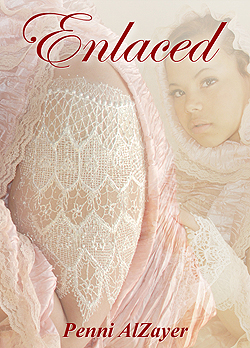 Soon after the calendar work was completed in the 2012, Penni AlZayer illustrated, and TapDancing Lizard published "Enlaced,"
the most influential book showing white henna: over 2500 copies have
been downloaded in the first two years of publication. People
especially loved the cover with Penni's work in Becoming Moonlight® on
a young woman's arm ... and they understood the work as 'White
Henna'. |
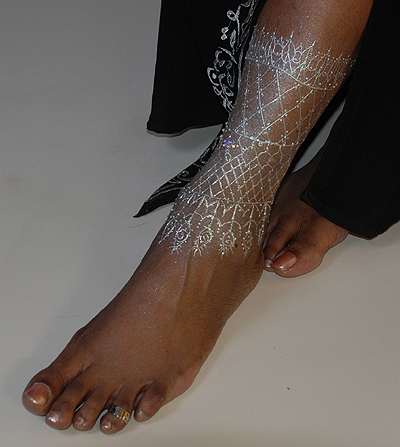 Becoming Moonlight® gilding paste 'white henna' in silver by Penni AlZayer | We
refer to Becoming Moonlight® as 'White Henna', because of the thousands
of people who have seen this work on HennaPage call us, they ask for
'white henna' ... that's how they understand it! If they love it, and it's safe and beautiful, who are we to argue about what to call it? If you are a henna artist, HennaPage recommends that you add Becoming Moonlight® 'white henna' to your repertoire, and that you go ahead and call it 'white henna' if that's what your clients assumed it was when they saw a picture of it. If somebody comes to you and asks if you have 'white henna' say, "Yes, absolutely!" You can explain that it's not henna while you're doing beautiful artwork on them, and that's OK ... because every time someone asks for 'white henna' henna artists win a little bit against 'black henna.' |
The Henna Page information is provided free to you by the support of TapDancing Lizard LLC site group and Mehandi.com.